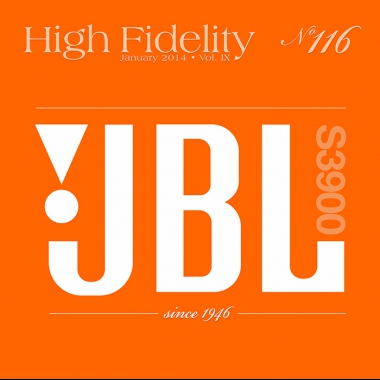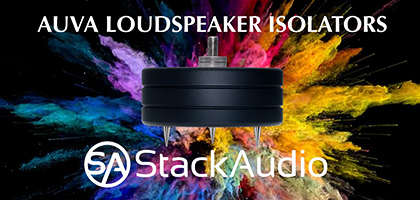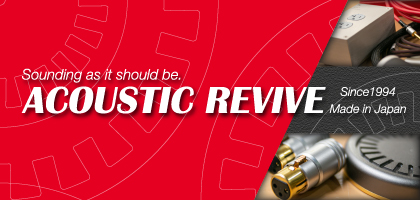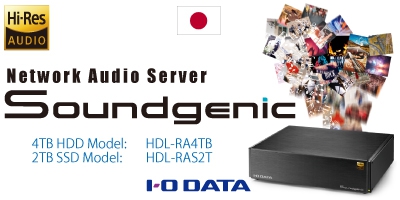No. 239 April 2024
- COVER REVIEW: Muarah MT-3 & MY-1/9 ⸜ turntable & tonearm » POLAND
- KRAKOW SONIC SOCIETY ⸜ meeting № 145: POLSKIE NAGRANIA (Polish Recordings label) on SACD, with Damian Lipiński onboard » POLAND/Kraków
- REVIEW: Carbide Audio CARBIDE BASE ⸜ anti-vibration feet » USA
- REVIEW: Fezz Audio EQUINOX EVO ⸜ digital-to-analog converter » POLAND
- REVIEW: Marton OPUSCULUM OMNI V1.0 ⸜ integrated amplifier » POLAND
- REVIEW: Norma Audio Electronics REVO IPA-80 ⸜ integrated amplifier » ITALY


|

|
|
NOTHING BUT CHANGES (in my reference system)

A special characteristic of our quest, and an easily explainable one, is the need for change. When we hear a system that sounds better than ours, whose sound touches some chords in us, we want to repeat the experience. Preferably by ourselves in our own home. It’s possible by changing particular components in our system. But you need to grow up to it – financially and mentally. When it comes to money, the situation is clear. But an inner conviction that it’s a step in the right direction, that we WANT this, is more difficult to explain, because it’s subject to the needs of an individual. Yet sooner or later, if we only treat this hobby seriously and respect ourselves, we mature to it. Each of these changes is a small trauma, however. Because although we ascend a step higher, and we go in the right direction, sometimes as we gain something we lose another, one that we were used to and comfortable with. Apart for being an audio journalist, I’m also a music lover and audiophile. So I am subject to the same “laws” as the readers of “High Fidelity”. I also feel the internal need to change something in my system. But changes are necessary. From every point of view. I am both an audiophile and a journalist at the same time. Hence, I also feel the need for change. Due to the reasons I’ve mentioned before, it’s a very lengthy process, and decisions are made after very long auditions, lots of hesitations and consideration. When it finally comes to it, I have to be 100% sure about my decision. But it does happen sometimes. 
This year I’ve changed several components that we’d call “accessories”, if it weren’t for the fact that the changes they introduced were equal, if not bigger, than those brought about by a new component or speakers. I spent most money on a new interconnect between the CD and preamp. The Acrolink Mexcel 7N-DA6300 (see HERE), extremely respected by me, was replaced with the Siltech Royal Signature Series Double Crown Empress (see HERE and HERE). It brought into the equation depth and smoothness. As well as outstanding resolution. But on the whole it was something more than an improvement of particular sonic aspects. It was like changing the point of view, or getting to look at music in a different, better way. In the future I’d like to get a speaker cable from this series, too, although it’s not as important as changing the interconnect. And to fight for it, I first have to sell my current reference gear, the excellent Tara Labs Omega Onyx. I also have new power cords. The improvements that they brought are, more or less, similar to those that the new interconnect did, although an order of magnitude smaller. I’ve been using the Acrolink Mexcel series power cords for years – first the 7N-PC9100, then the 7N-PC9300, and now the newest 7N-PC9500. They currently supply power to my CD player (1.5 m) and amp (1.5 m) and to the power strip (2 m). The preamplifier is still waiting, although in its case the changes were smaller than in the other two. The new cables have an awesome sound cohesion and depth. After auditioning them with the Krakow Sonic Society, some of the members decided to get the new Acrolinks. Our host even bought six of them! (See HERE). They’re the best power cords that I know. And they show their value in any cable system, not only with other Acrolinks. 
But the thing about cables is that they are plugged into the back of components and you can’t see them. Electronics and speakers are a different story. As is the furniture that the electronics sits on. The latter have a more aesthetic role, although they do have to meet some technical assumptions. These types of audio racks are complex anti-vibration platforms that take care of keeping the electronics securely in place and preventing vibration. Meeting these both requirements is not easy, though. The more expensive the electronics, the more difficult it is. The increased complication of anti-vibration elements usually results in an increased importance of their technical aspects and diminished visual aesthetics. This is usually hard to accept by household members if the system is located in a living room, and not in a dedicated space. 
That’s why when I first saw the Pagode Edition rack from the German company Finite Elemente, I was simply star-struck. Their previous version, the classic Pagode, was already very beautiful, a successful combination of wood and aluminum. But what the manufacturer achieved in the “Edition”, at the same time improving its sonic characteristics, is incredible. It’s the most beautiful piece of audio furniture that I know, which also brings in such calm into the sound, improving its resolution, definition and bass tonality so much that I don’t know how I lived without it before. I have yet to meet a person who doesn’t like this rack. The components look incredible on it, and each element seems special and important. It’s one of the best purchases of my life. The rack is built on an aluminum frame with the two top shelves “suspended” on special spikes. Each of these shelves is made of a wooden frame and decoupled decks. Each frame also has special vibration absorbers built into it, a Finite elemente patent. All of it sits on Cera line feet with ceramic balls. It looks amazing in the color finish I ordered it in. As the shelf comes assembled and calibrated, it seems that setting it up would be easy. But that’s not the case – it took me a few hours. 
And finally: headphones. As you all know, for quite some time now my reference headphone amp has been the Leben CS-300, initially in its basic version, and now a custom one made especially for me. Paired with my Sennheiser HD 800s it’s a real source of pleasure and a great device. Now I have two reference systems. The Leben is still my first love. But I’ve noticed that I spent more and more time with another system: the Bakoon Products HPA-21 amplifier and the HiFiMAN HE-6 planar headphones. It’s a system that has its tonal balance set slightly higher than the Leben and doesn’t match the latter’s full bodied midrange. Its resolution is, however, much better and thus more real. And it doesn’t hum. Together with the new headphone cables, which are the Entreq Atlantis, this is now my standard headphone sound source. The Leben and Sennheiser pair remains, but has an auxiliary role. WHAT’S NEXT?As a matter of fact, each component of my system could be improved. Not much, but still. It doesn’t always make sense, though, and not every change would be a step forward for me, but more like running in circles. The speakers are a point in case. Even though some of the speakers I have reviewed may have been slightly better in this or that aspect, none of them have overall bettered my Harbeth M40.1; at least not in this room, not with this system and not for me. I have found, however, better preamplifiers than mine. These include, first of all, the Octave Jubilee Pre, the Dan D’Agostino Momentum Preamplifier and the Ayon Audio Spheris II. I liked the first one the most. To use it in my system would be problematic, though, as it lacks a remote control. I need to hear the volume changes instantly, without the need to stand up and change it manually. I would also have other problem with fitting the preamplifier from USA in my system, as it only has balanced inputs, and the use of converters is simply pointless, in my opinion, and decreases the quality of sound. The closest to what I’m looking for would be the Spheris II preamplifier. The change would also be the least problematic for me, as its sonic character is essentially identical to that of the Polaris III, only the sound is approximately 15% better. There is a problem with my preamp, though, which hasn’t been eliminated in the more expensive model: the volume regulation. Beside other reasons, the Ayon preamplifier is fantastic because of its ultra-short signal path. From the input selector we go straight to the amp tube, and from there, to the gain regulator, which is a transformer with multiple taps. It works perfectly. The problem is the tap switching mechanism that replaces the rotary potentiometer. After some time of heavy usage, the switch contacts stop being fully functional and the knob needs to be fiddled with before they switch the right circuit. In my case, when I need to immediately compare different volumes, this is quite annoying. 
Similarly, I have been extremely pleased with my Soulution 710 power amplifier. I am curious, though, how the changes in the power supply affect it and how the new 711 sounds. I talked about the design changes with the amplifier’s designer and company owner, Cyrill Hammer, in Munich. I need to check now how the premises translate to sound. There's one more system component that awaits its moment – the turntable. I am frequently asked why I don't have one of my own. The answer is always the same: I have turntables for a review in my apartment almost constantly, and I simply wouldn't have anywhere to put it. About six months ago I finally caved in, though, and ordered a special version of the Acutus from Avid Hi-Fi, equipped with the SME V arm. But because I agreed with the owner of Avid, Mr. Conrad Mas, that he’d visit me and help me set it up, it ended up at Avid’s Polish distributor. And so it lay there, sealed and untouched, for over a year. We just couldn’t arrange a date. For a few months now the boxes have been at my place, but I still can’t decide about opening them up. A turntable of this class deserves a dedicated stand so that it’s not being touched, and I just can’t provide it at the moment. Thus I have my own turntable, but it’s in boxes. NOTHING BUT MUSIC
The finale of the week that I write these words in is the day that wakes a shopping demon within any music lover, audiophile, and even ordinary person with some memories. In the USA it’s Black Friday, of course, a day of insane sales and price reductions. For us it’s the special “edition” of the Records Store Day, an event that aims to help indie records stores to emerge from the underground, since they’ve been disappearing from cities and villages faster than felt wellies. This year it falls on November 29. All the participating stores will be selling records in lowered prices (second album half price), as well as special editions prepared especially for this day. Their full list is available HERE. In Kraków, three stores have joined Records Store Day: Music Corner at 4 św. Tomasza Street, Record Dillaz at 11 Berka Joselewicza Street, and Rock-Serwis at 2 W. Beliny-Prażmowskiego Alley. I’m headed to at least two of them with my son and friends, and I’ll write a report on everything we saw and bought in January’s editorial. For music is what brings life to the audiophile world and gives sense to the audio industry as I understand it. Otherwise it’s just fetishism and technical ecstasy, which is also OK and can also be a fantastic hobby. But it will have nothing to do with listening to music. Music is all that we’ve got and all audio gear is just meant to present it as much as possible. Hence, below you’ll find micro-reviews of a few albums that have been long overdue. I hope that you’ll find a Christmas gift idea among them  Black Sabbath 
Ozzy Osbourne is a restless spirit of the heavier sort of rock music, but he’s also not a bad businessman. His vocals were one of the reasons of the incredible success of Black Sabbath’s first albums, as one of their founding members. The group began their activity in 1968 as The Polka Tulk Blues Band, changing it to the current – much more fitting the style of music they perform – name in 1969. Black Sabbath’s music evolved from “hard rock”. Although this term appears increasingly rarely these days, pushed aside by more eclectic or narrowed-down genres, it evokes some good associations in fans of heavier types of rock. If that’s the case, and the phrase “hard rock” gives you some positive vibes, then you’ll be wildly delighted by 13 and you’ll be squealing with joy. The music is great and the sound is really decent. There’s a large amount of compression that’s necessary to make listenable, but that didn’t cover the dynamics or muffle the liveliness. Aside from strong, big drums there’s a lot of space left for Osbourne’s vocals, which resulted in a great feeling of power, as well as some degree of intimacy, if something like that even exists. There are some nice effects layered onto the vocals, and the guitars cross over low enough to not interfere with the vocals. The sound isn’t particularly selective, nor is it very resolute. But I wouldn’t really call it an issue, squealing quietly with excitement while listening to God is Dead? or Zeitgeist. It’s a full, dense, saturated sound with a lowered tonal balance. Sound quality: 7-8/10 
 Deep Purple 
The year 2013 turned out to be gracious to fans of hard rock. Two albums by two important bands were released – the previously reviewed Black Sabbath’s 13 and Now What?! by Deep Purple that debuted in 1968. It’s the 19th studio album by this British band (Black Sabbath’s 13 is also their 19th studio album!), released after an eight-year break since Rapture of the Deep (2005). It appeared in stores on April 26, and Bob Ezrin is responsible for its production. It’s an album with a dedication – to John Lord, died on July 16, 2012, a keyboard player and one of the founders of Deep Purple. I’ll add that I’ve just received their first four albums in Audio Fidelity gold re-editions. Their review will be coming soon. Deep Purple are pretty unlucky with their album. It’s great to listen to for the first 40 minutes, regardless of where you begin. Then it starts getting boring. But the basic material comes on with no problem. The bad luck is that their friends from Black Sabbath released their album about the same time and their release is better in every aspect. Also sonically. Now What?! is not saturated enough in the slower parts, and when more instruments come in and things get hot, its clarity falls a bit flat. You can hear the effort to combine dense playing with good selectivity, but it only really worked with Hammond organs. The guitars have a poorly-differentiated texture and they lack body in the bottom end. As they aren’t particularly clear or aggressive, either, they seem to lack expression. From time to time sibilants pop out above the basic level, suggesting a pretty strong compression. |
But maybe I’m exaggerating – when you compare Now What?! with, say, Perfect Strangers, you can hear that modern technology is capable of extracting many more shades out of this type of heavy music than it was once possible. Perfect… is my favorite album by this band and I own it in several CD versions, as well as a Japanese vinyl. Only the latter sounds decent. But it’s still worse than what I hear from this SHM-CD. Deep Purple’s newest album remains a solid, “listenable” release, while Black Sabbath’s 13 is simply better. 
Sound quality: 6-7/10  Mike Oldfield 
This year we’re celebrating the 40th anniversary of Mike Oldfield’s debut album, Tubular Bells. Although he has released 28 albums to this day, it was Tubular Bells that defined how his works would be received. Suffice it to say that he returned to this theme three more times, with the releases of Tubular Bells II in 1992, Tubular Bells III in 1998 and Tubular Bells 2003 that appeared in stores in 2003. Tubular Beats (2013) could also be included into that group. The album was comprised of two instrumental suites. Initially rejected by all record companies that Oldfield contacted, they were released by Richard Branson and the freshly-formed Virgin Records.
Tubular Bells is an album that has been released over and over again in all possible formats. The version that I’m presenting now appears to be the best possible of the CD format – the Platinum SHM-CD. The material used to make the disc is an ultra-transparent and uniform plastic, used in LCD screens. The ‘platinum’ part describes the reflective layer. It is indeed platinum sprayed onto an aluminum base. The reflection is much weaker than that off classic aluminum, which is why the disc won’t be played back on players that cannot handle CD-Rs. Platinum is used due to its unique qualities in focusing the laser beam. These discs are manufactured in the technology developed by JVC and called HR Cutting (in the manufacturer’s CD press). A high-resolution 24/176.4 file is supplied and the conversion to the Red Book format, i.e. 16/44.1, is carried out on-the-go, right before cutting the glass matrix that is used to make the “stamps”. The disc is coated with a special turquoise varnish that was earlier tested on SHM-SACDs.

Two of the remaining Oldfield albums released this year have been pressed as SHM-CDs and are sold both separately, as well as in a licensed box released by Union Disk from Japan, which uses cover from Crises. 
I compared all the three Oldfield’s albums with their Japanese releases from 2000. Tubular Bells Platinum SHM-CD is a new remaster from 2011, prepared in Japan in the DSD digital domain. Comparing it to the older version seems nearly pointless. Platinum SHM-CD usually mops the floor with any other CD release. This is also the case here. It’s not even about more of this or less of that – although that is true here. The new version of TB has a modified sonic texture. The sound is incredibly tangible and seems warm. Its resolution is incomparably better. The lower tones and the midrange particularly benefit from this. The bass has a really deep extension and unbelievable definition. I would compare it to analog sound, if a comparison like that were allowed. Analog sounds even more intimate, yet the Platinum SHM-CD seems cleaner. And I don’t mean noise or crackle, but a better depth, differentiation and even resolution. I’ve never heard this album sound so good before. Although Platinum SHM-CD releases sound fantastic with no exceptions, and much better than their regular counterparts, SHM-CD quality varies. There’s a big group of albums released in this way, like Dire Straits, which are weak, thin, and lacking body and substance. Sound quality: 
 The Fotoness 
Piotr Stelmach, a journalist for the Polish Radio Three, has mentioned this album’s re-edition in his programs, which got me interested. He has actually written a long, interesting essay in the booklet attached to the release. It is its first digital version and it was immediately treated seriously. Released by Polskie Nagrania, it received an appropriate graphical design, a very good re-master, and there are additional, unreleased tracks (also sung in Polish) along the eight standard songs sung in English. As you can learn from the information booklet, it was possible to find the original master tape and that’s the sound source on this re-release. Recordings from the 1980s have common sonic characteristics that result from the conventions, trends and technological limitations of that time. Multitrack recordings usually used heavy compression and noise reduction, resulting in a muffled and dynamically limited sound, with a too powerful treble that lacks body. When I Die sounds exactly like that. I’m afraid that even the best remaster will not change that, because the music material has these flaws and defects imprinted in its “body” forever. Sound quality: 5/10 
 Dwa Plus Jeden 
The archives of Polskie Nagrania are a mine of incredible music releases, often completely unknown to the public. A large part of it shows us bands that have been wrongly pigeonholed into a particular music genre. When it comes to the 2 + 1 band, we can see its much more interesting side. It seems that a large part of Polish popular music recordings is trash from the sound quality point-of-view, even if the intentions of the people engaged were different. But that’s not true about Aktor. Although we’re not talking here about high dynamics and tangibility of sound, the calm that emanates from it, as well as its beautifully chosen proportions and depth, make us start feeling much better, as if we were listening to a quality Japanese re-release of a prog-rock album from the 1960s or 1970s. Ms. Zofia Gajewska, the recording engineer, did a marvelous job. There is no compression, which most contemporary performers flirt with these days, or sound muffling that kills the spirit of music. But all credit for that goes largely to the person who – in my understanding – was responsible for the “re-mastering”, despite it being called “mastering” in the leaflet: Ms. Anna Wojtych. If I understand it correctly, she’s the sound engineer who works for DUX, for example. She has a good hand for albums and it’s worth following her other work. Aktor, prepared by two women, doesn’t have particularly high dynamics and seems a little subdued. But a good system picks out lots of tiny details that enrich this presentation, allowing the listener to enjoy the music. I’ve already mentioned its good tonal balance and lack of compression. I’ll add to this quite good resolution, as well as a nice stereo panorama. It’s really a great album, also musically! Sound quality: 8/10  John Dowland 
Lachrimae, composed by John Dowland (1563-1626), an English renaissance composer and published in 1604, was written for five viols and lute. The recording, under the direction of Jordi Savall, was made in 1987 and is now released in the Heritage series as a hybrid SACD/CD with a stereo and multichannel mix. A dense and rather warm sound are the main characteristics of Alia Vox recordings. The album with John Dowland’s compositions is even warmer, and has its tonal balance even lower than usual. Partially, it’s due to the selection of instruments. But not only. It seems the intention was to enlarge phantom images and correct the sound volume. It totally worked. The resolution is magnificent, as always with this record company. It may seem slightly worse than with previous releases due to a higher sound density. The sound is saturated, very close to the listener. The room’s acoustics is hence slightly reduced. Not that you can’t hear it, but its role in this presentation is not as prominent as with other Jordi Savall’s releases. It’s a wonderful recording, prepared slightly differently than others before, and one that is incredibly satisfying musically. Sound quality: 9/10 
 Cecilia Bartoli 
Cecilia Bartoli is one of the biggest contemporary opera stars. Born in 1966 in Rome, the singer is known for her scenic temperament and incredibly characteristic voice. She’s gained most recognition for music collections and recitals, including Opera Prohibita from 2005 and Sacrificium four years later, for which she received her fifth Grammy Award. The album Mission, with a visually stunning but rather pointless cover, repeat the same pattern but its repertoire is unique, as nearly all of it are premieres. 
Cecilia Bartoli’s new recordings are brilliant. While you may not like this type of releases, kind of recitals, this particular one is worth having, in the SHM-CD version with a bonus DVD. The release is fantastic, just like the music and sound. The latter is deep and tangible, full and resolving. The soundstage extends very deep, although it’s not as precisely defined in further planes. The near planes are most important, and they have a great holography. Bartoli’s vocals have a slightly emphasized lower midrange, making them seem bigger than usual. By the same token they are also distinctive and clearly in the foreground, and that’s what this album is about, I guess. There’s not a trace of glassiness and brightening; instead, there is calm and dynamics wherever needed. Much of credit for that goes to the strong well-outlined bass. LINK  10 YEARS OF “HIGH FIDELITY” In 2012 and 2013 we’ve had a real avalanche of anniversaries of big, known companies. Magazines, too. In 2014, we’d like to join the bandwagon and add our own, humble 10-year anniversary of “High Fidelity”. On May 1, 2004, we published our reviews under this name for the very first time. Ten years later we’re in a place I never even dreamed of reaching. I’d like to thank all of you, in advance, for all the time, help, input and good words you’ve given us! Thank you for spending the whole 2013 with us and we are hoping for more in the future! |
About Us |
We cooperate |
Patrons |
|
Our reviewers regularly contribute to “Enjoy the Music.com”, “Positive-Feedback.com”, “HiFiStatement.net” and “Hi-Fi Choice & Home Cinema. Edycja Polska” . "High Fidelity" is a monthly magazine dedicated to high quality sound. It has been published since May 1st, 2004. Up until October 2008, the magazine was called "High Fidelity OnLine", but since November 2008 it has been registered under the new title. "High Fidelity" is an online magazine, i.e. it is only published on the web. For the last few years it has been published both in Polish and in English. Thanks to our English section, the magazine has now a worldwide reach - statistics show that we have readers from almost every country in the world. Once a year, we prepare a printed edition of one of reviews published online. This unique, limited collector's edition is given to the visitors of the Audio Show in Warsaw, Poland, held in November of each year. For years, "High Fidelity" has been cooperating with other audio magazines, including “Enjoy the Music.com” and “Positive-Feedback.com” in the U.S. and “HiFiStatement.net” in Germany. Our reviews have also been published by “6moons.com”. You can contact any of our contributors by clicking his email address on our CONTACT page. |




 |
     |
main page | archive | contact | kts
© 2009 HighFidelity, design by PikselStudio,
projektowanie stron www: Indecity







 udiophilism is often compared to a disease: once you fall ill to it, it’s hard to recover. A person stops thinking about other pleasures, and falls into the abyss of deliberations on the superiority of Platinum SHM-CD over SBM and vice versa, diving into the details of treble reproduction and questioning the established wisdom of serious engineers. You need to be ill to do something like this.
udiophilism is often compared to a disease: once you fall ill to it, it’s hard to recover. A person stops thinking about other pleasures, and falls into the abyss of deliberations on the superiority of Platinum SHM-CD over SBM and vice versa, diving into the details of treble reproduction and questioning the established wisdom of serious engineers. You need to be ill to do something like this.


